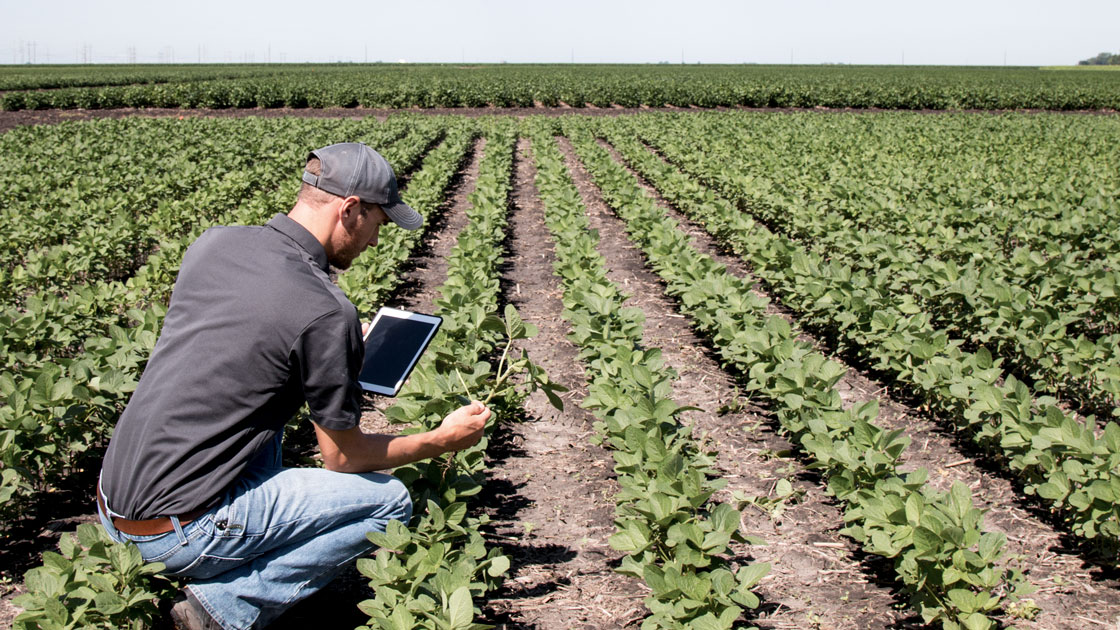Seeking to understand this audience better through data, analysis, and face-to-face conversation is as critical as ever.
Farmers around the world are to thank for something you’ve eaten in just the past few hours. But for all their hard work and perseverance, they’re often misunderstood. And for those of us who work in marketing, misunderstanding this important segment can result in communication that is unfortunate and ineffective to outright alienating.
With that in mind, here are three of the most important things I’ve learned while marketing for ag brands.
Farmers are Undeniably Digital
Some of us may see farmers as less sophisticated in how they process digital information, or even resistant to modern technology as a whole. And while I’ve since found this to be untrue, it’s a misconception that was present in my own bias before I started working with ag brands and the farmers they serve.
The fact is, farmers want what’s best for their business (more on that in a minute), and many of them are leaping forward with technology in ways that might surprise you.
It’s not just sensors and self-driving tractors, though. Farmers are using technology to consume more information, more quickly, and in more places. Years studying website analytics, email open rates, and content engagement have taught me this about farmers: they have not stepped timidly into the 21st century.
In some respects, this segment has a greater need for real-time information than the rest of us who take it for granted. I’ve learned, for example, that when farmers have “down time” while sitting in a GPS-guided tractor for a few hours, they may use that time to check commodity prices, listen to an agriculture podcast, and do other research online that will influence their business decisions.
This is an opportunity for us to reach growers when and where it matters, whether it’s an update on their grain contract’s performance, or a relevant paid search ad that puts the right product in front of a serious prospect. This is also further evidence for the need to provide mobile-friendly websites, email design that displays well on all major devices and email clients, faster page load speeds, and where applicable, dedicated mobile apps.
Farmers are Business-Minded
As a child, some of the first Hollywood depictions of farmers I saw were laid-back, cheerful, straw-chewing guys who preferred the newspaper to the TV and whose idea of “business” was the bank on Main Street. The nearest farm to our house may as well have been a thousand miles away, as I had no accurate understanding of what it meant to farm for a living.
That’s changed over the years, and I’ve gained a huge appreciation for the weighty business decisions farmers are forced to tackle every day. They’re literally working to provide for their families (and others’), send their kids to college, and finance equipment that costs more than most people realize.
Of the over 2 million farms across America, “about 97 percent of U.S. farms are operated by families – individuals, family partnerships or family corporations.” As with most other business owners, bookkeeping terms like accounts payable/receivable, assets and liabilities, invoicing, and payroll are part of the modern farmer’s lexicon.
Because of this, I’ve learned that successful marketing to ag growers includes things like:
- stories that make the brand relatable and human while establishing key business promises
- performance data showcased through intuitive web design
- simple proof points that highlight brand successes
- a clear next step that makes it easy for farmers to engage
It helps to remember that we’re not just speaking to men and women who work hard in the field; these are people who also put in long hours in front of computer screens and sitting at desks.
The Human Component Still Matters
The farmer demographic should be familiar to us in that they are digital users and business-minded. But one of the ways marketing to this audience may be different from others is what makes for a successful conversion.
If you’re a digital marketer, and especially if you’ve marketed to millennials, your default call to action (CTA) might be mostly- or fully-digital. For example, you might be asking website visitors to add a product to their cart, download an app, or subscribe to an email campaign. And all of those can be useful in ag marketing, too.
But when it comes to providing farmers with next steps online, the right option may be one that allows for more human interaction. The ag brands I’ve worked with put a high value on personal contact because their farmers put a high value on it, and they create opportunities to build trust.
This is important to recognize in our line of work. While other audiences might respond better to immediate, all-digital CTAs, the average farm principal operator is about 55 and many still like to know their business has the attention of an actual human.
In Summary
If your image of the American farmer is grandpa puttering around on a 19th-century cast iron tractor seat, unconcerned with things like financial dashboards, think again. Modern growers—as demonstrated by the data— are keeping pace with today’s technology.
Seeking to understand this audience better through data, analysis, and face-to-face conversation is as critical as ever.
